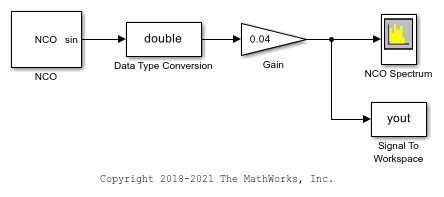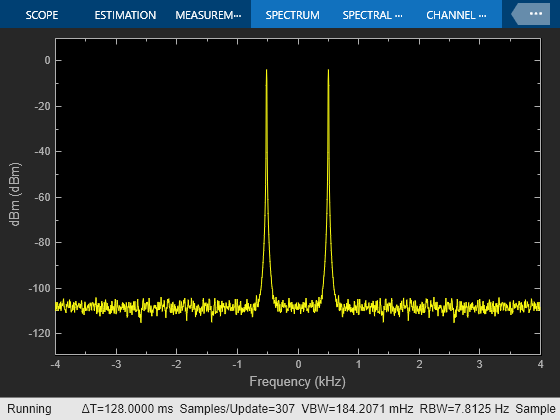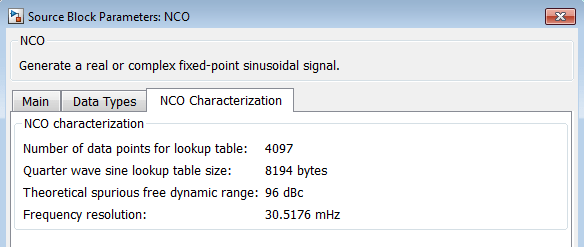Design an NCO Source Block
This example shows how to design an NCO source block with the following specifications:
Desired output frequency:

Frequency resolution:

Spurious free dynamic range:

Sample period:

Desired phase offset:

1. Calculate the number of required accumulator bits from the equation for frequency resolution:



Note that N must be an integer value. The value of N is rounded up to the nearest integer; 18 accumulator bits are needed to accommodate the value of the frequency resolution.
2. Using this best value of N, calculate the frequency resolution that will be achieved by the NCO block:



3. Calculate the number of quantized accumulator bits from the equation for spurious free dynamic range and the fact that for a lookup table with 2^P entries, P is the number of quantized accumulator bits:



4. Select the number of dither bits. In general, a good choice for the number of dither bits is the accumulator word length minus the number of quantized accumulator bits; in this case 4.
5. Calculate the phase increment:
phase increment = 
phase increment = 
phase increment = 16712
6. Calculate the phase offset,  , using the desired phase offset,
, using the desired phase offset,  :
:



7. Open and simulate the ex_nco model:


The NCO block in the model is populated with the specifications and quantities you just calculated. The output word length and fraction length depend on the constraints of your hardware; this example uses a word length of 16 and a fraction length of 14. You can verify that the specifications of this problem have been met by looking at the NCO Characterization pane of the NCO block.

8. Experiment with the model to observe the effects on the output shown on the Spectrum Analyzer. For example, try turning dithering on and off, and try changing the number of dither bits.
See Also
Blocks
- NCO | Signal To Workspace | Spectrum Analyzer | Gain (Simulink) | Data Type Conversion (Simulink)